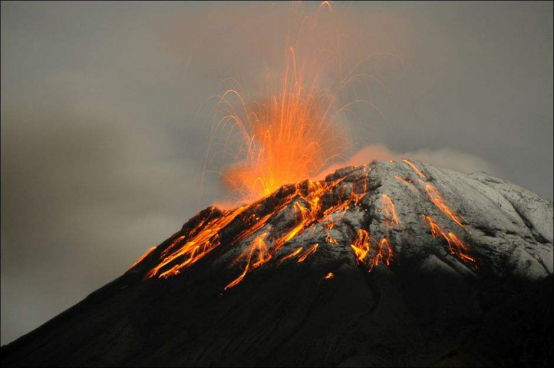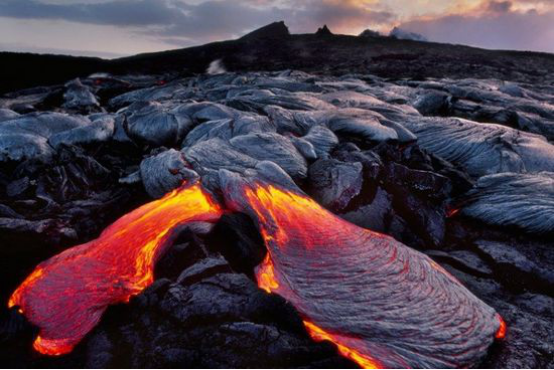Santander World Elite™ Mastercard®: The Perfect Travel Companion
How to Download and Install VIX for Free?
Fortnite Tops 350 Million Registered Players
Observation | Country Multipliers Makes Monetization Easier for Developers
Playrix downloads exceed 1 billion
What You Need to Know About Secured Credit Card Deposits!
There are an estimated 300 active volcanoes in the world, and our challenge is how to monitor them and give early warnings before they erupt.
Now researchers have designed a specially modified drone to help them collect data on active volcanoes in Papua New Guinea.

Drones could help local communities to monitor nearby volcanoes and predict future eruptions. Their measurements will also provide a better understanding of the most unapproachable, highly active volcanoes and their impact on the global carbon cycle.
Manam is located on an island just 10 kilometres away the northwest coast of Papua New Guinea. The island has more than 9,000 people, and Manam volcano is the most active volcano in the country. A major eruption in 2004 caused the entire island to be evacuated to the main island, and it destroyed crops and homes.
Scientists have only a few ways to predict when a volcano will erupt. They can monitor seismic activity in the area, monitor the quakes that almost always occur before a volcano erupts, and look for upwelling on the volcano's slopes as underground magma rises.
When visibility allows, satellites can quickly monitor and measure emissions of gases such as sulfur dioxide from volcanoes. These changes in emissions can predict increased activity in the volcanoes below.
Emma Liu, a volcanologist from London University said, “Manam has not been studied in detail, but with satellite data we can see that it is producing a lot of emissions.”
Tobias Fischer, a geochemist from New Mexico University said: “We also wanted to quantify the carbon emissions from this giant CO2 machine.”
Although volcanoes’ emissions account for only a small part of human carbon emissions, researchers still want to figure out how much carbon dioxide they emit and include that factor in our carbon budget to limit the effects of climate change.

The international team came to Papua New Guinea, during two field trips to Manam Island in October 2018 and in May 2019, tested two long-range drones equipped with gas sensors, cameras and other equipment.
Manam's steep slopes make it extremely dangerous for people to walk up to collect gas samples, but the drone could safely fly into the rising heavy smoke, helping the research team to more accurately measure the volcano's emissions.
The drones rose more than 2,000 metres into the fast-moving volcanic ash plume, about six kilometres away from their depart point and far away from sight of their operators.
Each flight brings back images of Manamu volcano and its two craters, measuring the composition of the gas directly above the rising plume, and collecting four bags of additional gas for quick analysis after recovery.
Drones captured the aerial images which showed the degassing of manamu's south crater intensified between October 2018 and May 2019. In fact, the volcano erupted soon after in June, just a month after the researchers' second field trip.
But increased volcanic emissions are not a reliable indicator of whether an eruption is imminent on its own, therefore, researchers will also observe the ratio of carbon dioxide to sulfur dioxide in Manam's ash plume.
This could help monitor magma rising to the surface, as well as the carbon-rich emissions that erupt before big eruptions.

However, the researchers found that the structure of the gases emitted from Manam volcano was similar to the one during the two field trips.
Combining their drone measurements with satellite data, the researchers were able to prove that Manam is one of the top 10 most degasified volcanoes in the world, emitting about 3800 tons of carbon dioxide and 5100 tons of sulfur dioxide everyday -- more than previously expectation.
By analysing the different carbon isotopes in the gaseous mixture, the team inducted reasoning that most of the carbon emitted by Manam might have come from the upper mantle, rather than deposits in the earth's shallowing crust.
The research team concluded in the paper, “Our new approach – using long-range, high-altitude drones for field measurements -- is the only currently available method that allows us to analyse the gas chemistry of a steep, dangerous and highly active volcano like Manam.”
Research in the future will require more effort by scientists and longer flying time of drones, as this study measured data over a span of just 10 days.
If there are adequate equipment and training for local scientists, the method could be used elsewhere to monitor other dangerous unreachable volcanoes, such as Mayon in the Philippines and Sinabung in Indonesia.